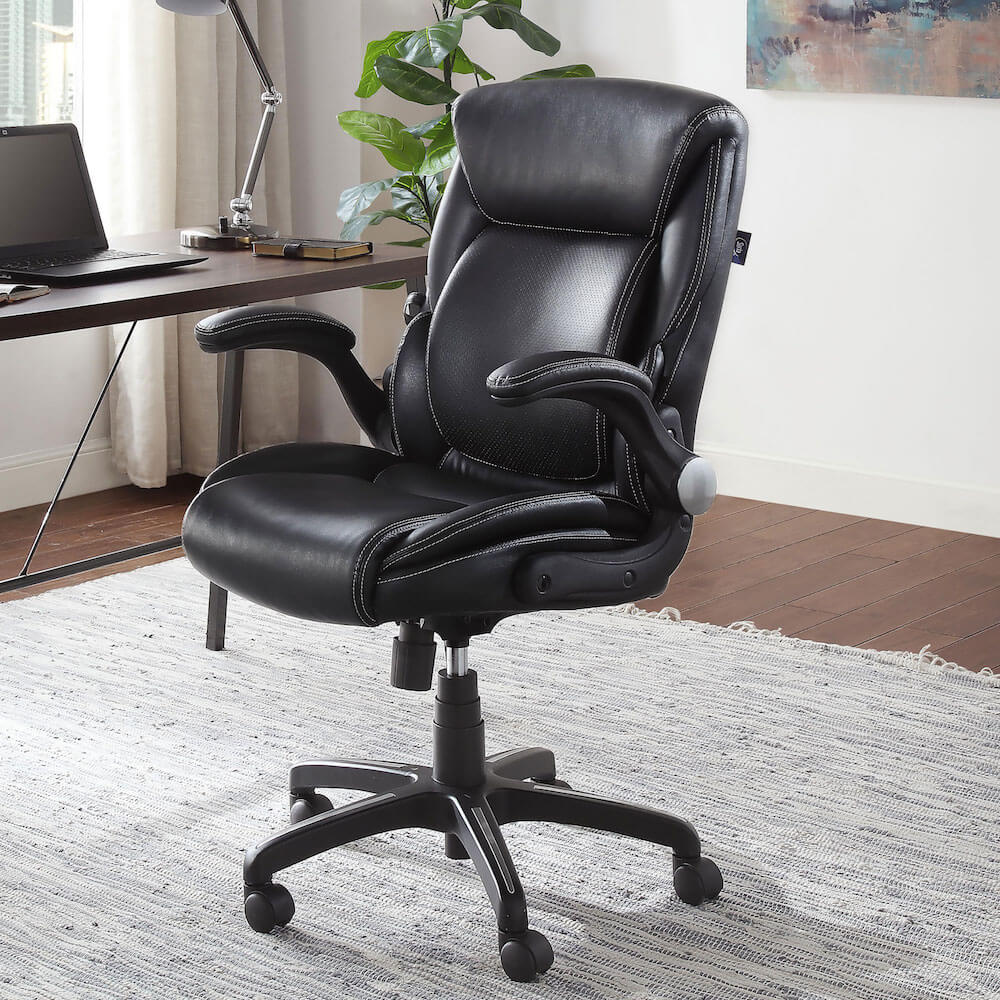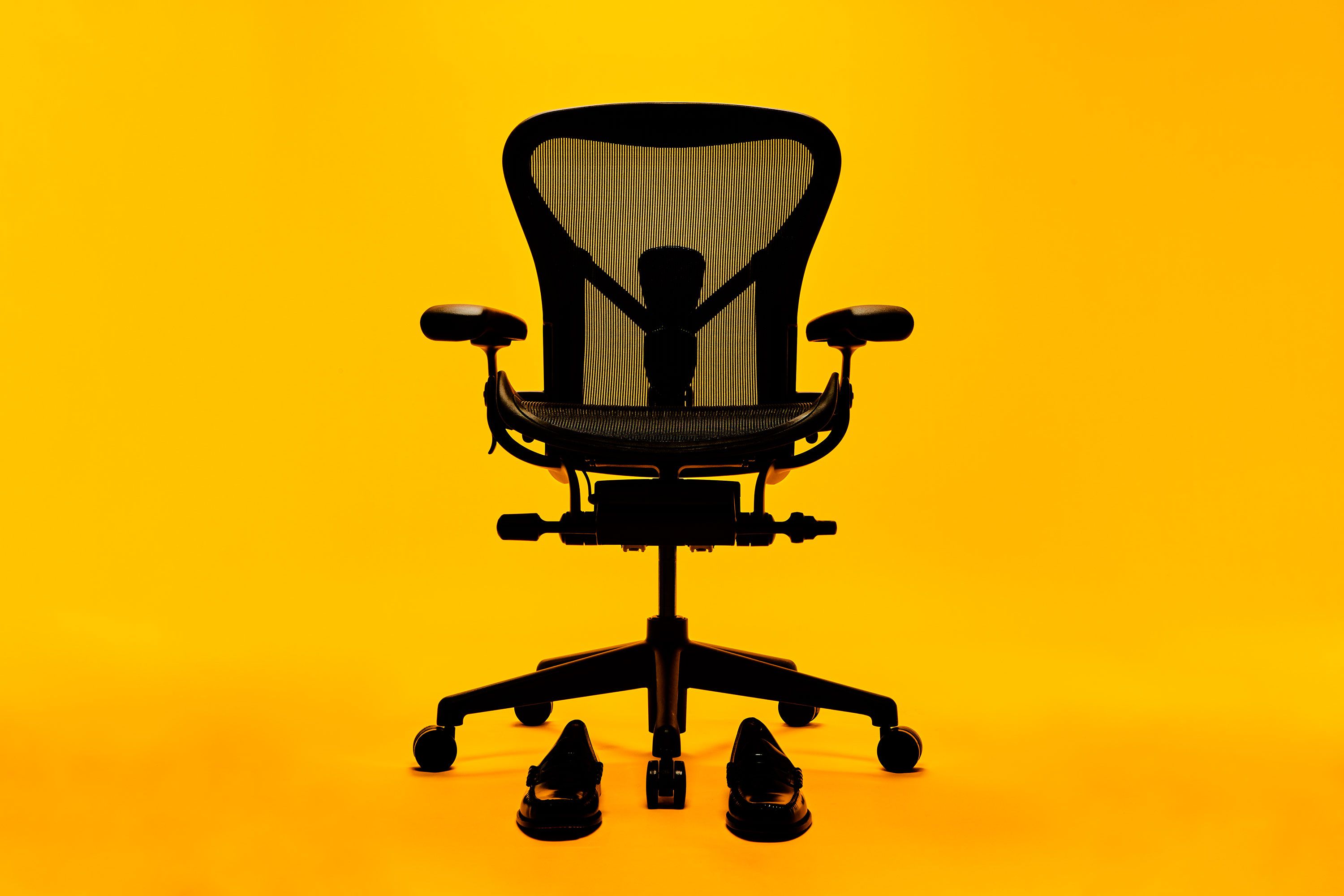Comfort and Durability

A comfortable and durable chair is crucial for long-term computer use. The materials used, the padding and cushioning, and the overall construction all play a significant role in determining the chair’s comfort and longevity.
Materials and Their Impact
The choice of materials significantly influences the chair’s comfort, durability, and aesthetics. Here’s a comparison of popular materials used in office chairs:
Mesh
- Pros: Breathable, lightweight, and promotes air circulation, preventing heat buildup and discomfort during prolonged sitting.
- Cons: May lack the plush feel of fabric or leather, and can sometimes feel less supportive, especially for heavier individuals.
Leather
- Pros: Durable, luxurious, and easy to clean. It develops a rich patina over time, adding to its aesthetic appeal.
- Cons: Can be expensive, prone to cracking or tearing if not properly cared for, and may not be suitable for hot or humid climates due to its lack of breathability.
Fabric
- Pros: Wide variety of textures, colors, and patterns available, offering a range of aesthetic options. Generally more affordable than leather and offers better breathability than leather.
- Cons: May require more frequent cleaning, can be prone to staining, and may not be as durable as leather or mesh.
Padding, Cushioning, and Seat Firmness
The padding and cushioning of a chair are critical for comfort and support.
Padding
- Types: Foam, gel, and memory foam are commonly used padding materials.
- Density and Thickness: The density and thickness of the padding influence the chair’s firmness and support. Higher density foam provides greater support but can be less comfortable for long periods. Thicker padding offers more cushioning but can make the chair feel less supportive.
- Durability: Foam padding can deteriorate over time, losing its shape and support. High-quality foam with a higher density and a good warranty can help extend the chair’s lifespan.
Cushioning
- Types: Seat cushions can be designed with different shapes and contours to provide better support and pressure distribution.
- Adjustability: Some chairs offer adjustable seat cushions for customized comfort.
- Ergonomic Design: Chairs with ergonomic seat cushions are designed to promote proper posture and reduce strain on the spine and hips.
Seat Firmness
- Personal Preference: Seat firmness is a matter of personal preference. Some individuals prefer a firmer seat for better support, while others prefer a softer seat for more comfort.
- Impact on Posture: A chair that is too soft can lead to slouching and poor posture, while a chair that is too firm can cause discomfort and pressure points.
Construction and Build Quality, Best chair for long term computer use
The construction and build quality of a chair are crucial for its durability and stability.
Weight Capacity
- Importance: The weight capacity of a chair is the maximum weight it can safely support. It’s essential to choose a chair with a weight capacity that exceeds your weight for long-term durability and safety.
- Impact on Longevity: Exceeding the weight capacity can lead to premature wear and tear, weakening the chair’s structure and potentially causing it to collapse.
Stability
- Base and Wheels: A stable base with sturdy wheels is essential for smooth movement and preventing tipping. The number of wheels (typically five) and the quality of the materials used in the base contribute to stability.
- Swivel Mechanism: A smooth and reliable swivel mechanism allows for easy movement and adjustments. It should be able to withstand frequent use and resist wear and tear.
Adjustability
- Seat Height: Adjustable seat height allows you to customize the chair to your height and desk setup, promoting good posture and reducing strain.
- Armrests: Adjustable armrests provide support for your arms and wrists, reducing fatigue and strain.
- Backrest: Adjustable backrest allows you to customize the angle and support for your back, promoting good posture and reducing strain.
Features and Functionality: Best Chair For Long Term Computer Use

Beyond comfort and durability, a chair designed for extended computer use should offer a range of adjustable features to optimize posture, reduce strain, and enhance productivity. These features cater to individual preferences and needs, allowing users to customize their seating experience for maximum comfort and support.
Adjustable Features
The most significant features of a good chair for long-term computer use are its adjustable components. These features allow users to customize the chair to their specific body size and posture, ensuring proper support and reducing strain.
- Adjustable Lumbar Support: This feature provides targeted support for the lower back, reducing strain and promoting good posture. A well-designed lumbar support can help prevent back pain and discomfort, especially during extended periods of sitting.
- Advantages: Improved posture, reduced back pain, enhanced comfort, and increased productivity.
- Disadvantages: May require adjustment depending on individual needs, and some designs might not provide sufficient support for all users.
- Armrest Adjustments: Adjustable armrests allow users to position their arms comfortably, reducing strain on the shoulders, wrists, and elbows. They can be adjusted in height, width, and angle, catering to various user preferences.
- Advantages: Reduced strain on shoulders, wrists, and elbows, improved posture, and enhanced comfort.
- Disadvantages: May require frequent adjustments, and some designs might not provide sufficient support for all users.
- Seat Tilt: This feature allows users to adjust the angle of the seat, providing a more comfortable and supportive position. A slight recline can help reduce pressure on the spine and improve blood circulation.
- Advantages: Reduced pressure on the spine, improved blood circulation, enhanced comfort, and reduced fatigue.
- Disadvantages: May require frequent adjustments, and some designs might not provide sufficient recline for all users.
- Headrest: A headrest provides support for the head and neck, reducing strain and promoting proper posture. It can be adjusted in height and angle to suit individual needs.
- Advantages: Reduced strain on the neck and shoulders, improved posture, enhanced comfort, and reduced fatigue.
- Disadvantages: May not be necessary for all users, and some designs might not provide sufficient support for all users.
Additional Features
Beyond adjustable components, some chairs offer additional features that can enhance comfort, functionality, and overall user experience.
- Integrated Footrests: These features provide support for the feet and legs, reducing strain and promoting better circulation. They can be adjustable in height and angle to suit individual needs.
- Advantages: Reduced strain on legs and feet, improved circulation, enhanced comfort, and reduced fatigue.
- Disadvantages: May not be necessary for all users, and some designs might not be easily adjustable or retractable.
- Wheels: Wheels allow users to easily move around their workspace, reducing the need to get up and down. They can be lockable to prevent the chair from rolling when not in use.
- Advantages: Increased mobility, reduced fatigue, and enhanced productivity.
- Disadvantages: May be noisy on hard floors, and some designs might not be suitable for all floor types.
- Swivel Capabilities: Swivel capabilities allow users to easily turn and rotate, providing greater flexibility and ease of movement. They can be useful for reaching items on the desk or interacting with colleagues.
- Advantages: Increased flexibility, ease of movement, and enhanced productivity.
- Disadvantages: May be distracting for some users, and some designs might not be stable enough for all users.
Best chair for long term computer use – Finding the best chair for long-term computer use is crucial for comfort and productivity. While many focus on ergonomic features, consider the racing simulator chair as a unique option. A good best racing simulator chair often boasts lumbar support, adjustable armrests, and a high back, which are all features that can translate well to long hours spent at a desk.
Finding the best chair for long-term computer use is crucial for maintaining comfort and avoiding strain. A good chair should provide ample support for your back and neck, and allow you to adjust the height and angle for optimal posture.
While you’re focused on your work, a bit of upbeat music can help keep you energized, and what better choice than the lively rhythms of best cha cha dance music ? Just like a good chair supports your body, the right music can support your mood and productivity.